“Smile 2” Horror Auteur Parker Finn on Crafting a Sequel About a Haunted Pop Star in New York
Writer/director Parker Finn has been enjoying a whirlwind victory lap in the days since his Smile 2 opened number one at the box office to become the year’s top-grossing horror film. “It’s been very surreal and exciting,” Finn told The Credits, speaking from his Los Angeles home. In fact, the past four years have unspooled for Finn with the kind of momentum young filmmakers dream about, thanks to his mastery of nightmarish scenarios.
Finn became obsessed with horror films growing up in Ohio, where he absorbed the art and craft of the well-timed jump scare. He applied those lessons in his short film Laura Hasn’t Slept, which won a SXSW Special Jury prize after playing to festival crowds in 2020. He then signed with Paramount Pictures to make the feature-length Smile. That 2021 effort, centered on a virus-like curse that announces its presence with a terrifyingly insincere grin, earned $217 million on a $17 million budget.
For the follow-up, Finn shrewdly cast against type by picking British singer-actress Naomi Scott, who literally played a Disney princess in Aladdin, to portray haunted pop star Skye Riley. Inspired by singers like FKA Twigs, Sia, Lady Gaga, Rihanna, and Olivia Rodrigo, Skye is bedeviled by toxic fans and the ever-lurking “smile” demon.
On a recent afternoon, Finn, who’s a producer on the film, explained how he cracked the code for creating a fresh-feeling sequel and about how his movie helped spur local economies in New York, where Smile 2 was filmed.
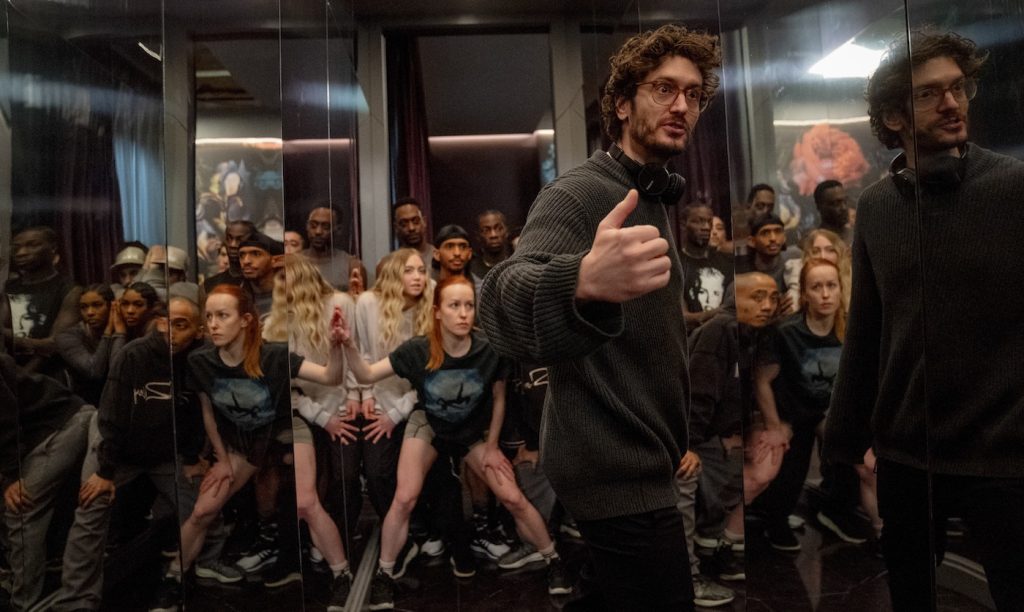
Sequels can be very tough to get right. You figured out how to successfully extend the original Smile premise into fresh territory in ways that have excited horror fans of all stripes. How did you come up with pop star-meets-horror concept for Smile 2 ?
Early on, all of the ideas that initially came to me when I first thought about a sequel —I threw them all away because they felt too obvious, too expected. I really wanted to push myself to do something that nobody would see coming, and I landed on this mega-pop star character of Skye Riley. What I loved about it was that the world of this pop star felt so far from the first one. Where everything was supposed to be shiny and fun and exciting. I was curious if I could make it feel cold, frightening, and almost alien.
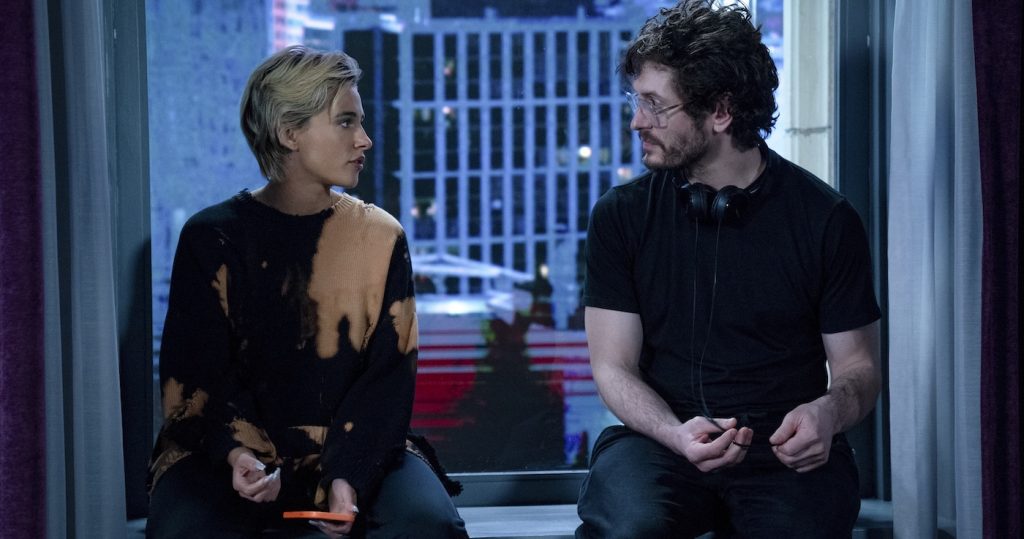
When you say you “landed on” the idea for this character, was there a specific lightbulb moment, maybe while watching a music video, when you realized, “This is my hook?“
I don’t know if I could trace it to an exact moment. I think that right now we’re at this peak para-social relationship with fame and celebrity and fandom and stuff like that. I love pop music. I’m fascinated by how we, as humans, worship celebrities, and I guess there was just something in the air that felt interesting to me. Once I got struck by the lightning bolt, I got obsessed with it.
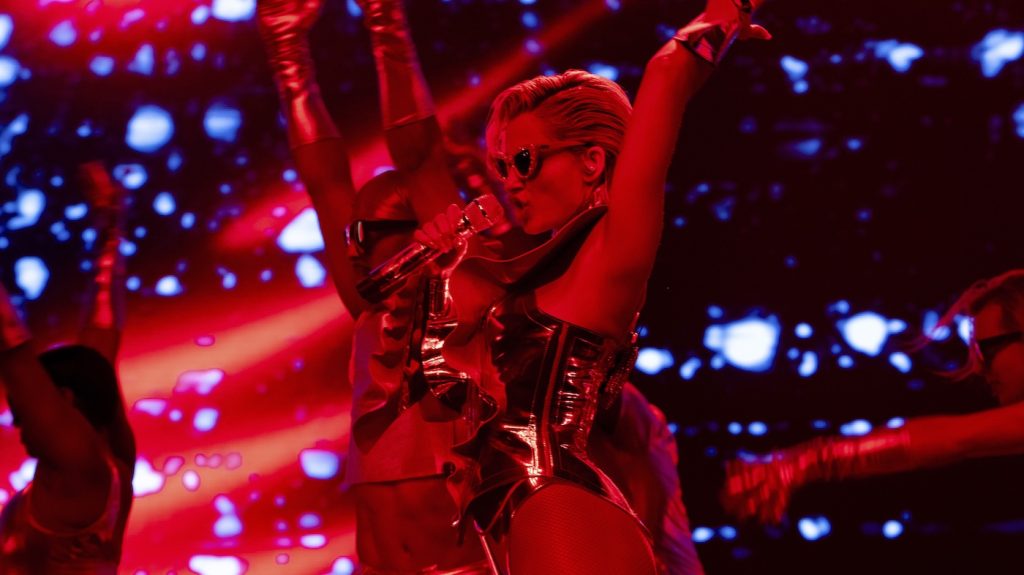
You build your story around Skye Riley, portrayed brilliantly by Naomi Scott, who always tries to put on a happy face.
You know, once I started thinking about this incredibly famous, public-facing figure who’s expected to be “on” all the time, who’s performing and playing this persona that everybody thinks she is, I then wanted to go behind the scenes, behind that velvet rope, and explore the real human who’s trapped by her own fame and everything that she’s dealing with inside of her own head.
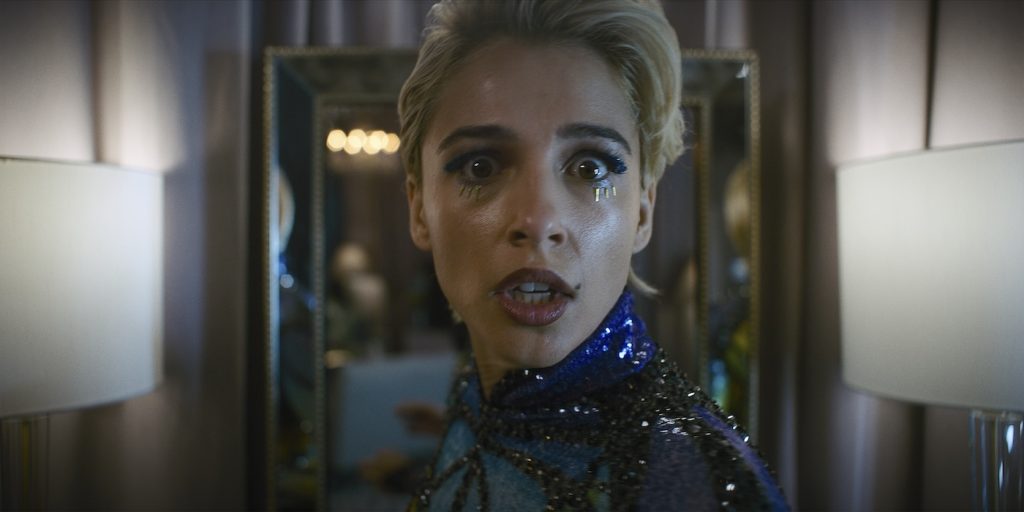
You shot Smile 2 in New York, not, for example, in Romania or some other country where mid-budget films often get made. In addition to writing and directing, you’re also a producer on Smile 2.
Yeah.
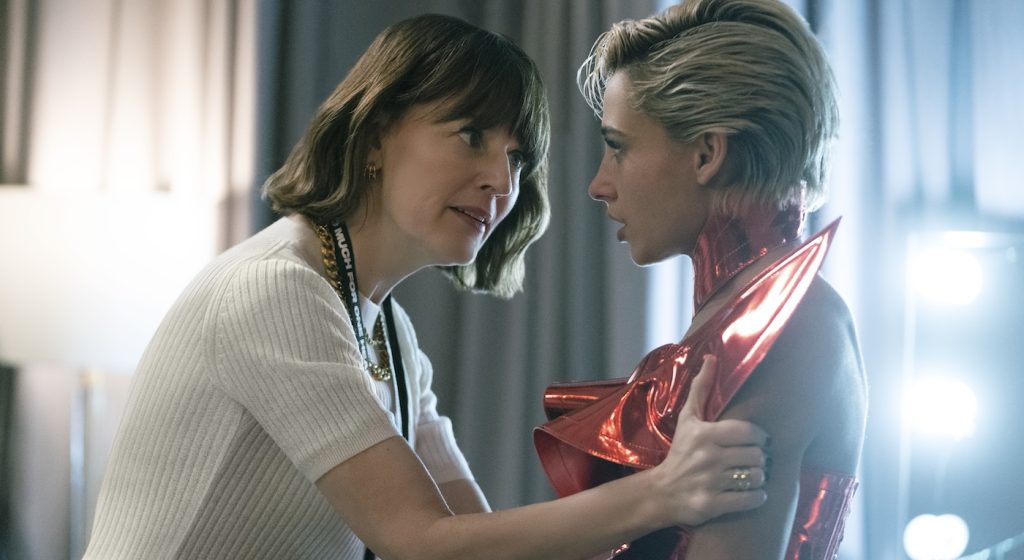
So, from a producer’s standpoint, were you mindful of the impact movie productions have on local economies?
Absolutely. Even with a modestly medium-budgeted film like Smile, you’re talking about thousands of people’s jobs who are affected by this movie from the moment it’s greenlit to when it’s delivered in post. Of course, first and foremost, you have to service the film and story. What does it demand? So I needed to look at that. And I think when you are trying to work inside your box, your budget box and schedule and everything, you’ve got to see what you can make work. But I was setting this film in New York City, and we’d shot Smile One in New Jersey, so I was familiar with the crew. We’re very lucky that New York has some of the best crews in the world, in my opinion, so we brought much of the first Smile crew back for Smile 2. But we also shot much of the film upstate in the Hudson Valley, so we were thinking about how to utilize local locations and work with local small businesses and things like that.
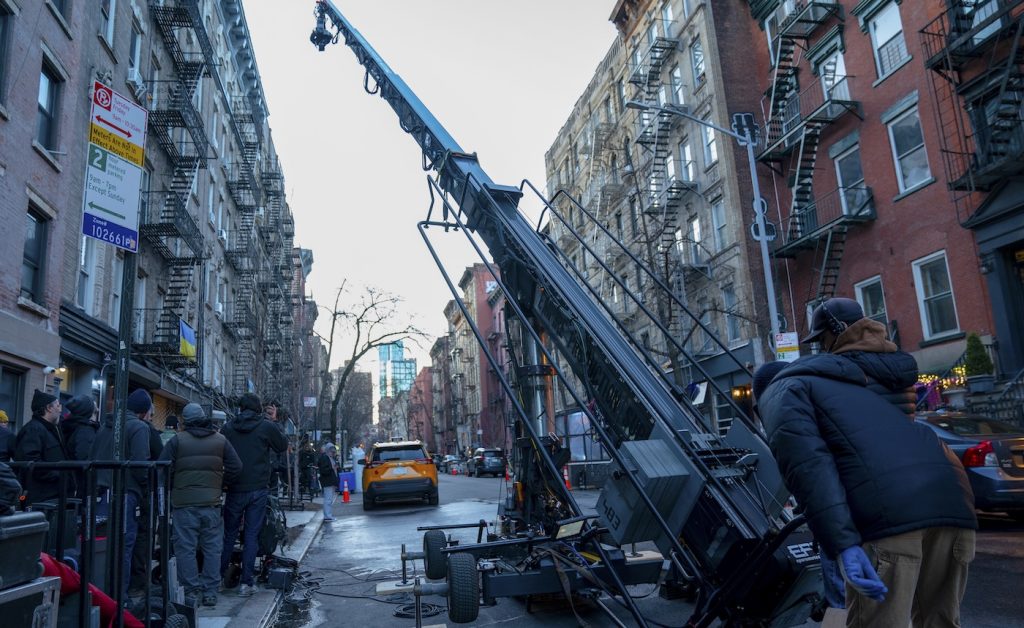
You filmed in small towns in upstate New York, such as Newburgh, Wappinger Falls, and Poughkeepsie. When Smile 2 came to town, would the production generate business for support services like catering, car rentals, and location fees?
Definitely. You’ve got to feed a crew of 100 people every day, and sometimes not just one meal. There’s a lot of stuff that goes into that. Or if we’re in one of these towns during the week and far enough from home base, we’re putting people up in hotels. There are so many ways where [film production] has a major ripple effect.
Smile 2‘s costume designer, Alexis Forge, for example, would need to hire a team to help her execute her vision for the characters’ clothes.
Every department is obviously going to figure out how to utilize their particular budget. Our costume designer has people she loves to work with, and some are from the city. Some are from upstate, but there are even things like laundering services for costumes and stuff like that.
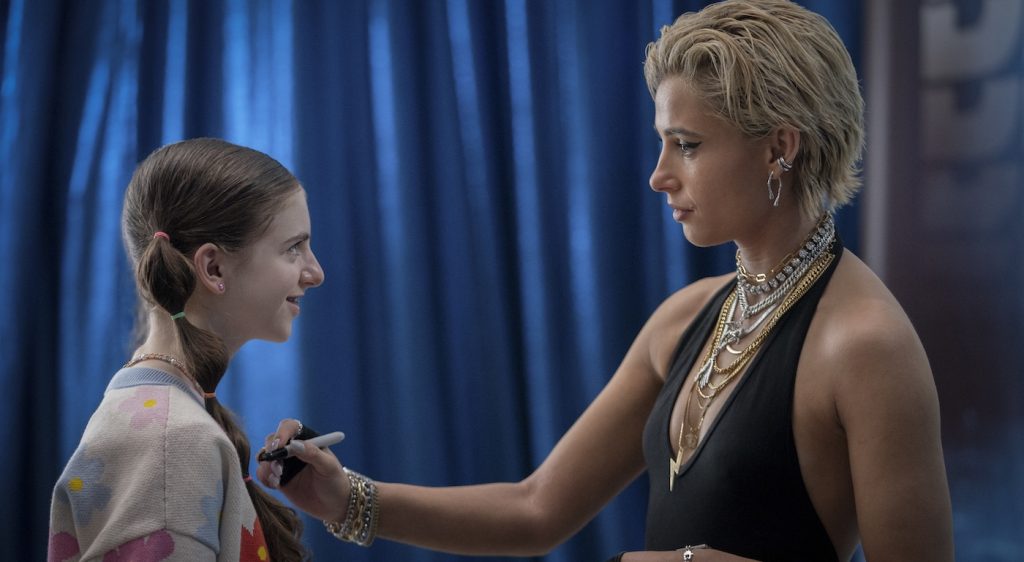
I remember when Chris Nolan shot a night scene for Oppenheimer down the street from where I live. The sequence only lasted a few seconds on screen, but for three days, vintage car wranglers, lighting technicians, set dressers, and security guards were on hand to make sure everything went smoothly. It takes a lot of man and womanpower to create the stories audiences enjoy in a movie theater!
There are a million different ways where it all intersects. In an increasingly globalized world, it feels good sometimes to have an impact locally. That’s a special part of making a film, especially an original film — I know this is a sequel, but it’s a sequel to an original film that was homegrown. You’re getting to help create jobs or sustain jobs. That’s really important because I think what we’re facing right now is a crazy time trying to make movies. I hope we keep finding ways to push and make the industry healthy, so everybody wins.
For more on Smile 2, check out these stories:
“Smile 2” Prosthetic Makeup Designer Jeremy Selenfriend on the Sequel’s Gruesome, Grinning Details
“Smile 2” DP Charlie Sarroff on Lighting a Curse-Afflicted Pop Star in the Big City
Featured image: Dylan Gelula, left, and Naomi Scott star in Paramount Pictures Presents A Temple Hill Production A Parker Finn FIlm “SMILE 2”



